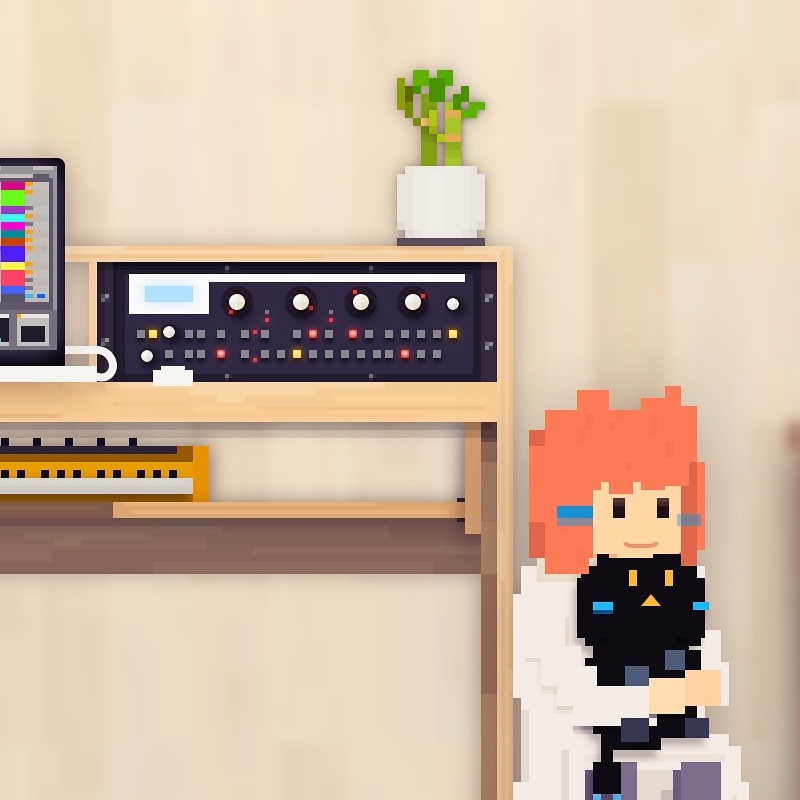Contents
1. The Mechanism
Reviewing the previous section; A scale is a collection of tones. One of the scale members works as a captain, which is called the tonal center(T.C.).
So even when the members are identical, the mood a scale produces may differ according to which note acts as the center.
But….Isn’t it strange? Yeah it’s convincing that involving black keys brings a new mood.
It’s damn natural because new keys are used there. But now compare the only-white-keys scales again.
The same 7 notes sitting in a line. Their formations look identical to my eyes! Admitting that the one is placed higher than the other, it’s not clear enough why there’s such a big difference between the moods they produce, isn’t it?
So in this section, I’d like you to have a closer look at the mechanism of scales.
Closer Look at Keyboard
The slogan here is; all keys are created equal—It don’t matter if it’s black or white. See the piano-roll instead of a keyboard.
A row above C is C♯, above C♯ is D……They’re equidistant from each other1.
So taking black keys equally into account, C and D is 2 rows away! Now you notice that the line of white keys (C–D–E–F–G–A–B) has a rather unusual step structure combining 1 row and 2 rows.
E–F and B–C are half as distant as the other combinations!! Look again at the piano keyboard…
Oh, there are no black keys between E–F or B–C. Such unevenness lies in the structure of keyboards.
The distance between a row like E–F or B–C (or C–C♯ etc) is termed Semitone, and the distance of 2 rows is termed Tone / Whole tone.
- Semitone
- A fundamental unit to measure the distance between notes. The distance of one row in the piano-roll, or one fret in the guitar.
- Tone / Whole tone
- The distance of pitch twice as large as semitone.
- Sometimes they’re casually called “Half step” and “Whole step”.
Now, sum up the story with these words.
2. WWSWWWS
The major scale has following step structure : Whole-Whole-Semi-Whole-Whole-Whole-Semi.
This formation is the identity of the scale, the source of its distinct mood—Bright/cheerful.
On the other hand, the minor scale : Whole-Semi-Whole-Whole-Semi-Whole-Whole.
Again, this array is the source of its dark/sorrowful mood.
Though there still remains the wonder why they specifically produce light/dark mood respectively, the mechanism of scales is elucidated. Imagine that these arrays of “W”s and “S”s are like DNA of scales.
Review
The arrangement of white keys in piano has uneven structure where whole tones and semitones are mixed. So even only with white keys, various formations are generated according to which tone is set as center.
Watch Out for Musical Scores!
Considering this, you find that though staves (Musical scores) you cannot see this unevenness since staves are the representation of keyboards—Where white keys come front while black keys are put in the back.
That’s not bad in practice because these scales are actually prevalent in popular music. This is kinda optimization. But beware of this “hidden mechanism” when you examine the structure of scales or chords!
3. Names of a Scale
Conclusion : Two elements are the identification of a scale— the tonal center and the step structure starting from it. When you specify a scale, you have to include these two data.
Thus, as briefly introduced before, the scale below is called C major scale.
“C” of-course designates the tonal center. And the name “major scale” is associated with the specific array; “WWSWWWS”.
And the dark one is called “A minor scale“.
The name “minor scale” is associated with “WSWWSWW”.
Now you’ve got the mechanism of scales. In the next section, we’re gonna apply this system further.
Summary
- Sound character of a scale is determined by its structure of steps from TC.
- Music staves are optimized for piano, so it’s not a good tool for examines step structure.
- Major scales and minor scales are the two prevalent scales in popular music.
